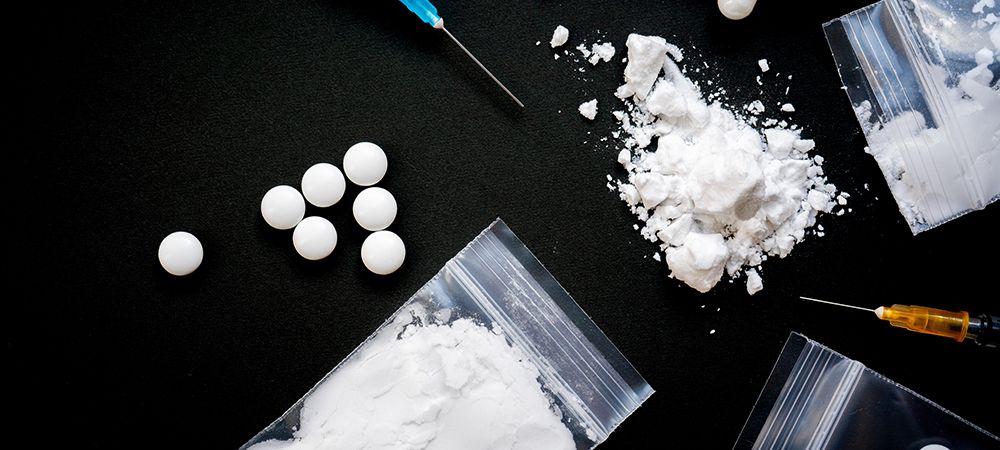Stimulant Addiction and Abuse in Canada
Stimulant addiction and abuse are fast becoming an epidemic in Ontario. Health professionals prescribe stimulants to help people struggling with hyperactivity, sleep disorders, and depression. Prescription stimulants are available in injectable liquid and pills.
Under the correct dosage, stimulants are therapeutic and come with multiple health benefits. However, the misuse of stimulants can cause serious health effects or, worse, death. Prescription stimulants have high addiction potential.
Due to their addiction potential, it’s not surprising that a greater part of the Canadian population abuses stimulants. Presently, stimulants are prevalent among youths aged 21 to 25 (5.6%) and teens aged 16 to 20 (5.4%).
Approximately 16 million adults take prescription stimulants yearly. On the other hand, only about 5 million people use prescription stimulants properly without misuse. These numbers show that many people are unaware of the dangers of stimulant addiction and abuse symptoms. Here, we analyze several data to show the misuse of this prescription drug.
Stimulant Abuse and Addiction in Canada: Numbers, Statistics
According to a 2017 survey conducted by the Canadian Tobacco, Alcohol, and Drugs Survey (CTADS), an estimated 714, 000 (2.6%) individuals in the 15+ age group suffer from stimulant addiction. Not just that, this figure significantly grew by 1.1% in 2018.
About 4 million people abuse prescription stimulants occasionally. At the same time, 0.4 million suffer from stimulant misuse disorders. Prescription stimulants are responsible for over 103,000 clinic emergency room visits.
This same research showed that the stimulant addiction crisis in Canada shares a link with depression. Most individuals with stimulant use disorders struggle with suicide ideation, depressive disorders, and depression symptoms.
Mortality
About 30% of overdose and drug abuse deaths in 2017 were due to prescription stimulants. In 2019, psychostimulants, particularly methamphetamine (meth), caused 16,000 plus deaths.
Young Adults (students)
Stimulant addiction and abuse are not uncommon among youths. In fact, they’re the largest age fraction with drug misuse disorder. With prescription drugs becoming popular on campus, the abuse rates by college students have seen a significant increase. Estimates are that, about 20% of youths within the age of 18 to 25 abuse stimulants.
In 2010, Ritalin was the most prescribed drug to young adults. Since then, statistics show that the rate of students misusing it rose by 50%. Students also abuse other stimulants like Dextroamphetamine (Adderall), Lisdexamfetamine (Vyvanse), and Methylphenidate to increase focus, attention and above all, academic performance.
Some students even go as far as obtaining non-prescribed drugs from their peers to study for longer periods. More recent studies show that, unlike teenagers and adults, young adults take stimulants alongside alcohol.
Abusing prescription stimulants alongside alcohol puts young adults at a greater risk of experiencing health problems like paranoia and cardiac irregularities. Within the Ontario student population, 2.7% of male students and 1.2% of female students have a stimulant abuse problem.
Adults

2 million people aged 21 and above reported non-medical use of prescription drugs. An estimate of 0.5% of adults ( 26 and above) also took non-medical stimulants. The numbers show a significant rise from both 2015 (0.6%) and 2013 (0.7%) stimulant addiction statistics.
Health care expenses
According to Canada’s healthcare organization datasets of 2017, total healthcare costs related to stimulant addiction were estimated at $2 million. Meanwhile, Medicare insurance paid about $800,000 for most patient’s prescription drugs. At the same time, commercial insurance and Medicaid each spent approximately $1 million on stimulant addiction treatment.
Stimulants like Ritalin and Dexedrine also raised the price of an emergency department visit by 20% compared to people with cannabis addiction. The healthcare costs of stimulant addiction services are high. Not to mention, over half of these costs are paid for with taxpayer’s money.
Legal Stance on Stimulant Addiction and Abuse in Canada
It’s no news that Canada is experiencing an unusual epidemic of stimulants addiction and abuse overdose deaths. So, it’s not surprising that the state enforces laws to regulate this substance. Although you can purchase prescription stimulants over the counter, drugs like cocaine and opioids fall in an uncertain legal zone.
Stimulants like Adderall and Vyvanse are partly illegal in the sense that only professionals can prescribecthem. However, the use of methamphetamine is presently illegal. Note that, in 2005, Adderall was banned in Canada because it caused over 60% of heart-related deaths. But in 2009, the New Drug Committee (NDC) reintroduced it to Canadians.
Stimulant related emergency room visits
In 2018, nearly 1 million ER visits in Canada were related to stimulant abuse in one way or the other. Only about half of those visits were due to drugs patients ingested following the doctor’s prescription. 20% of ER visits were related to the misuse of prescription stimulants. Of this 20%, more than 10% were as a result of non-medical misuse of stimulants and over-the-counter drugs.
Aside from that, about 15% of ER visits involved alcohol alongside other prescription drugs. In 2019, stimulant-related ER cases rose from 1 million to 1.5 million. These datasets show that more and more people visit the hospital every day due to stimulant abuse and addiction.
Related Article: Why Do Most People Get Addicted to Prescription Drugs?
Stimulant Abuse and Addiction Symptoms
Stimulant addiction and abuse affect your overall well-being. Since most stimulants are schedule II medications, they’re highly addictive and pose severe psychological and physical problems. Aside from this, they’re particularly detrimental to individuals with high blood pressure, heart disease, and bipolar disorder.
 Physical symptoms
Physical symptoms
- Growth retardation
- Organ damage
- Insomnia
- Dizziness and headaches
- Increased body temperature
- Nervousness and anxiety
- Lack of coordination
- Seizures
- Tiredness
- Sexual promiscuity
- Heart failure
- Irregular and increased heartbeat
Psychological symptoms
- Psychotic behaviours like paranoia and hallucinations
- Hostility
- Defective ability to remember, communicate and think
- Mood swings
- Violent behaviours like suicidal actions or homicide
Risk Factors for Stimulant Addiction
The common risk factors for stimulant addiction and abuse include:
Gender
According to research, the male population is at more risk of experiencing stimulant addictions and abuse symptoms. The reason is they’re more likely to consume almost any illicit drug, including alcohol, recreationally. Although women are also at the same risk of developing stimulant use disorder, the risk is lower. 13.5% of males over 15 have a drug addiction, compared to 5.4% of females in the same age group.
Alcohol intake
Alcohol has a unique metabolite that increases the high feeling when you use stimulants. Alcohol increases the risk of stimulant addiction because it encourages stimulant abuse in other ways aside from injection and ingestion.
Family or personal history of mental problems
Family mental health issues also contribute to the stimulant addiction crisis in Canada. Scientific research shows that having loved ones with mental health problems increases the risk of addiction.
Your genetic makeup also increases your vulnerability to stimulants. The differences in genetic makeup from person to person is why some individuals can misuse stimulants and still not develop an addiction.
Psychiatric disorder

Social/peer pressure
Social pressure is another risk factor for stimulant abuse and addiction in Canada. Young adults and teenagers are likely to abuse this substance because of its popularity in schools.
Related Article: Prescription Drug Addiction: How to Prevent a Relapse
Final word
Presently, the data on stimulant addiction and abuse remains limited. Nonetheless, from the numbers we uncovered during our research, it’s evident that many Canadians struggle with stimulant use disorder. The misuse of stimulants as prescription drugs comes with multiple side effects that often fly under the radar. It’s so bad that many patients experience irreversible damage before getting help.
Stimulant addiction can be life-threatening. The only way to reverse the effects of a stimulant habit is through professional drug addiction rehab. With several dedicated treatment procedures, you can reclaim your life.
We’re also aware that the recovery journey is never straight and that setbacks happen. But we’re confident you have every ability to recover.
If you’re struggling with stimulant addiction, Inspire Change Wellness Centre can help. Our stimulant addiction services provide you with top-notch facilities and access to the best addiction recovery experts. Call 1 (888) 508-9802 today to learn more.


 Physical symptoms
Physical symptoms